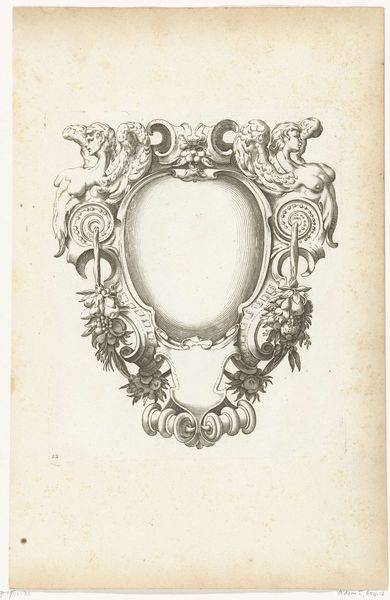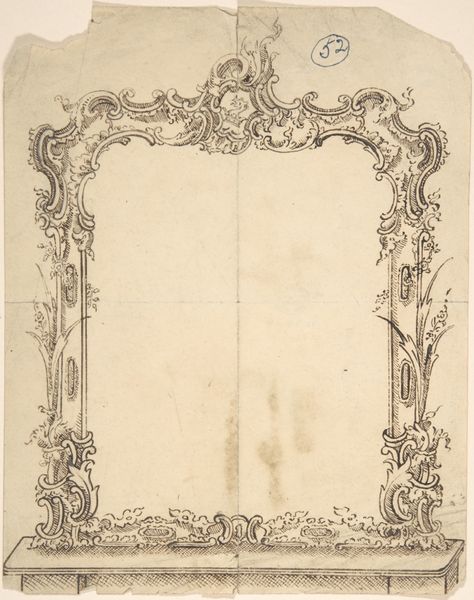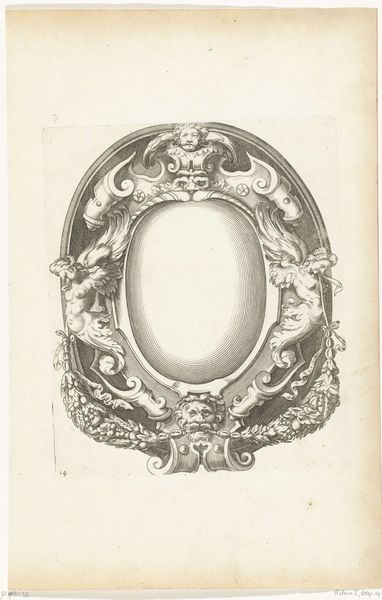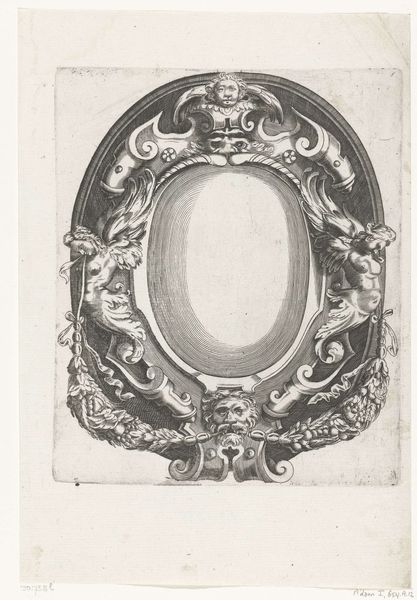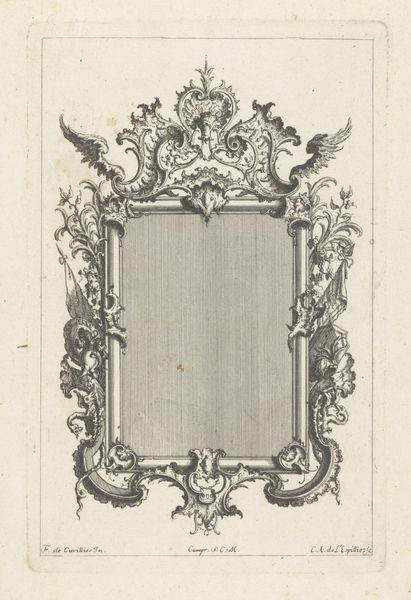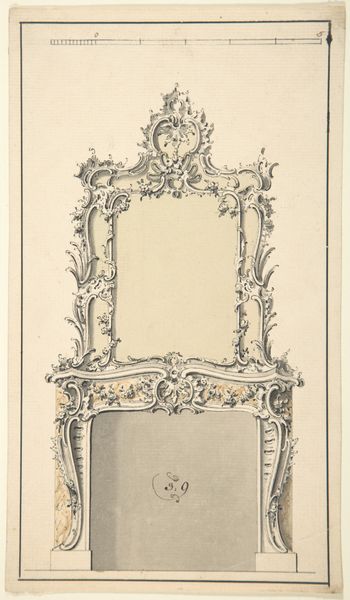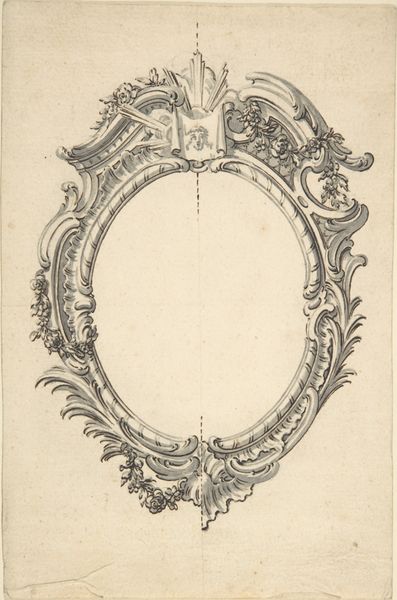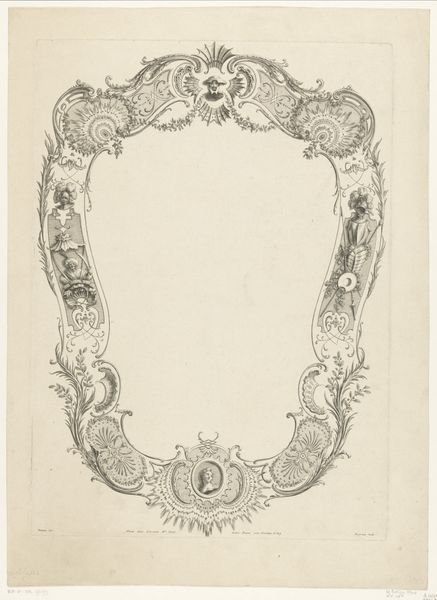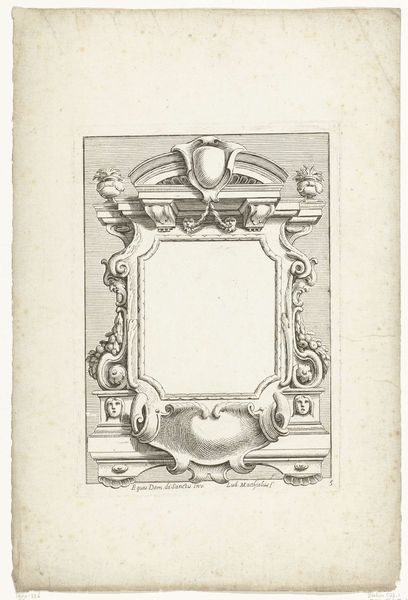
print, paper, engraving
#
baroque
# print
#
paper
#
form
#
line
#
engraving
Dimensions: height 140 mm, width 94 mm
Copyright: Rijks Museum: Open Domain
Editor: Here we have "Ovale cartouche met voluten in de hoeken," an engraving on paper by Hessel Gerritsz, dating from around 1610 to 1620. It's basically an ornate, oval frame. What immediately strikes me is the intricate detail and the implied movement in the volutes. What do you see in this piece? Curator: Formally, the composition presents a fascinating interplay between organic and geometric shapes. Note the crispness of the engraving, which allows for a sophisticated use of light and shadow to define the volutes and create depth. Observe how the central oval acts as a void, drawing attention to the surrounding ornamentation. Consider how the arrangement of fruit contributes to a sense of contained energy within the frame's boundaries. Do you agree? Editor: I do see that tension. The organic shapes of the fruit seem to push against the more rigid frame. I am curious, what function could such ornamentation play? Curator: Think of this less as a picture frame and more as a field of signification. The formal elements create a locus of meaning through contrast, balance, and rhythm. It suggests that meaning emerges from the relational interplay of these carefully structured elements, and less with subject matter or context. The frame *is* the subject, and the beauty is in the line work. Editor: That makes sense. I was thinking of it as something meant to hold another image, but it seems the artist wants us to consider *it* as the object of focus. I had never considered seeing an image in this way. Curator: Precisely. By prioritizing form, the artist elevates the aesthetic experience. In turn, it asks the viewer to engage in a dialogue with the artwork on a purely visual level. Editor: This has been very insightful. I'll definitely be thinking more about the formal qualities of art in the future.
Comments
No comments
Be the first to comment and join the conversation on the ultimate creative platform.

